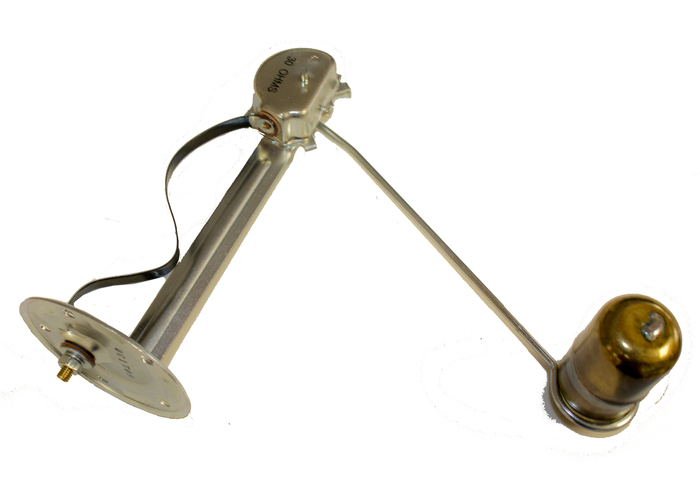Gas Tank Sending Units: A Comprehensive Exploration
These essential components play a valuable and heavy role in ensuring accurate fuel level readings for efficient fuel management in vintage Chevy vehicles.
In an era when automobiles were more than mere transportation-they were symbols of freedom and adventure-Chevrolet cars of the 1940s stood out then and continue to stand out today. Their sleek lines and chrome accents continue to capture the hearts of drivers. Hidden within the fuel tank rests a humble yet indispensable component: the gas tank sending unit.
A gas tank sending unit is a sensor responsible for measuring the fuel level inside the gas tank. Its primary purpose is to provide accurate information to the vehicle's fuel gauge, allowing the driver to monitor how much fuel remains. Without a reliable sending unit, drivers are left guessing, risking unexpected breakdowns and inconvenient stops to refuel. At the heart of the sending unit lies the float mechanism-this buoyant device moves up and down with the fuel level. As the tank fills, the float rises; as fuel is consumed, it descends. The float's position determines the resistance, which then results into a fuel level reading. The sending unit contains a variable resistor. As the float moves, the resistance changes. This varying resistance is critical for the fuel gauge to display an accurate level. In 1940s Chevrolets, the typical resistance range is around 0-30 ohms. The sending unit connects to the vehicle's wiring harness. The electrical signal from the resistor travels through the wires to the fuel gauge on the dashboard. Proper wiring ensures seamless communication between the sending unit and the gauge.
There are several flags that indicate a malfunctioning gas tank sending unit to be aware of. If your fuel gauge shows inconsistent readings or remains stuck on empty or full despite refueling, it's likely indicating a faulty sending unit. Watch out for erratic behavior in your fuel gauge. Inspect the sending unit by locating it in the fuel tank. Check for loose connections or wiring issues. Use a multimeter to test the sending unit's resistance and compare it to the manufacturer's specifications. Abrupt decreases in the fuel level could signal a malfunctioning sending unit. If you notice unexpected drops in fuel level, investigate the sending unit. Sometimes the fuel gauge gets stuck, showing the same reading (empty or full) consistently. Wiring issues or float-related problems within the sending unit can cause this issue. If your fuel gauge fluctuates unexpectedly while driving, suspect a malfunctioning sending unit. Seek prompt repairs to ensure accurate fuel level readings and safe driving. Remember, addressing sending unit issues promptly is crucial for maintaining accurate fuel level information and safe vehicle operation. If you encounter any of these signs, consider consulting a mechanic for expert assistance. The variable resistor inside the sending unit can develop resistance drift due to wear, corrosion, or age. This leads to inaccurate fuel level readings on the gauge. The float may become stuck in one position (usually full or empty). A stuck float results in a constant fuel gauge reading, regardless of the actual fuel level. Damaged or corroded wiring connections can disrupt communication between the sending unit and the gauge. Faulty wiring leads to erratic or no readings on the fuel gauge. Gaskets or seals around the sending unit can deteriorate, causing fuel leaks. Leaks not only affect readings but can also pose safety risks that you want to avoid.

Installation and Compatibility
Installing a fuel tank sending unit in a 1940s Chevy involves these steps:
Fuel Tank Removal: Accessing the sending unit requires removing the fuel tank.
Alignment: Proper alignment of the sending unit is critical for success. It must fit securely within the tank to ensure readings of accuracy.
Compatibility: Chevs of the 40s offer a 5-bolt fuel sending unit with the proper 0-30-ohm resistance. This unit works seamlessly with early GM model gauges through 1964. Whether your Chevy runs on 6 or 12 volts, this sending unit has you covered, as do we.
Proper installation: This ensures accurate fuel level readings and reliable performance.
1) Safety First:
- Before beginning any work, ensure safety. Disconnect the vehicle's battery to prevent accidental electrical mishaps.
- Work in a well-ventilated area away from open flames or sparks
2) Access the Fuel Tank:
- To reach the sending unit, you'll need to remove the fuel tank.
- Lift the rear of the vehicle using a jack and secure it on jack stands.
- Locate the fuel tank, typically positioned under the rear of the car.
3) Drain the Fuel:
- Use a fuel siphon or drain plug to empty the fuel tank. Be sure to dispose of the fuel properly.
- Be cautious, as you surely are aware, fuel can be flammable and toxic.
4) Remove the Fuel Tank:
- Unbolt the straps securing the fuel tank.
- Carefully lower the tank to the ground.
- Disconnect the fuel lines and electrical connections.
5) Locate the Sending Unit:
- The sending unit is inside the fuel tank.
- Remove the mounting plate on top of the tank.
6) Disconnect the Wiring:
- Identify the wiring harness connected to the sending unit.
- Disconnect the wires. Take note of their positions for future reassembly.
7) Remove the Sending Unit:
- Unbolt the sending unit from the tank.
- Gently lift it out of the tank.
- Inspect the gasket or seal.
- Replace if damaged.
8) Install the New Sending Unit:
- Ensure the new sending unit matches the old one in terms of resistance (as previously mentioned, usually 0-30 ohms for 1937-1954 Chevrolets).
- Insert the sending unit into the tank, aligning it properly.
- Secure it with the bolts.
9) Connect the Wiring:
- Reattach the wiring harness to the sending unit.
- Double-check the connections.
10) Reinstall the Fuel Tank:
- Lift the fuel tank back into position.
- Reconnect the fuel lines and electrical connections.
- Secure the tank with the straps.
11) Test the System:
- Reconnect the battery.
- Turn the ignition key to the 'ON' position (without starting the engine).
- Observe the fuel gauge. It should show the correct level.
- If the gauge behaves erratically, check the wiring and connections.
12) Final Checks:
- Inspect for leaks around the sending unit.
- Tighten any loose bolts.
- Lower the vehicle.
Remember, precise alignment and proper wiring are crucial for accurate readings. If you encounter any difficulties, consult a professional or seek guidance from other fellow vintage Chevy enthusiasts. Next time you admire a beautifully restored 1940s Chevrolet, remember that beneath its sleek exterior lies a reliable and small, yet vital, component that keeps these classic cars on the road, fueling memories and adventures.
Please contact customer service to change/complete your order.
Phone 1-877-735-0587


